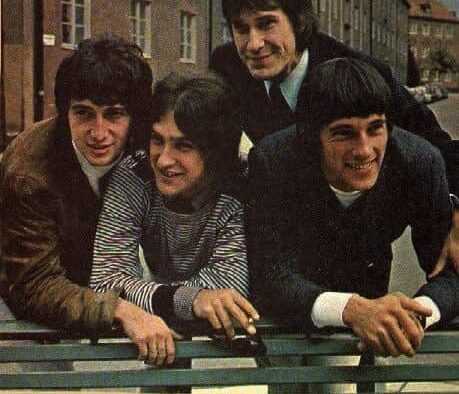Review: ‘The Kinks: Songs of the Semi-Detached’
Mark Doyle undertakes the challenge of understanding the music of one of the most quirky, interesting, and fantastically British bands in Classic Rock: The Kinks. Being an avid Kinks fan, I felt this book is a must-read.
Initially, given the title, I thought this study would merely emphasise the social commentary rife in the band’s music during the late 60s. I thought “semi-detached” was a clever allusion to housing, pivoting discussions concerning class and status. Nevertheless, Doyle surprised me: yes, he does seek to contextualise The Kinks’ songs within their environment, but he also aims to tie their lyrics particularly to English literary tradition and goes even further. Instead “semi-detached” refers to the mercurial frontman Ray Davies’s tendency to portray ambivalent sentiments in his songs, Davies’s contradictory feelings regarding discourse that inspired the band’s projects, and his controversial cultural and socio-economic status and beliefs.
Davies internalised the spirit of the blues, which informed his idiosyncratic vocal and songwriting style generally
Unsurprisingly, Doyle excels when examining the part the band’s environment played in shaping their sound. He stresses the importance of the front room in the Davies’ household, where Ray and Dave Davies were exposed to their older sister’s blues records, and where the family would get together to play or sing musically. Consequently, The Kinks’ early records prioritised the soundscape of their songs rather than its lyricism, which explains why tracks like ‘All Day and All of the Night’ (1964) and ‘See My Friends’ (1965) are very lyrically scant in comparison to the band’s efforts in the latter half of the decade. Moreover, Davies internalised the spirit of the blues, which informed his idiosyncratic vocal and songwriting style generally.
Doyle also talks of how the Davies family were working class economically and culturally, despite living in the Suburban area of London. Ray’s ability to satirise the middle and upper classes in songs like ‘A Well Respected Man’ (1965) was rooted in his lived experience, having grown up amongst those types of people, and arguably becoming part of their strata as the band saw success.
Doyle is at his best when attempting to root The Kinks’ songs in English literary tradition. For instance, Doyle cites the group’s music from late 1965 to 1967 as their Dickensian phase, in which their songs exemplify the approach to character study famed by authors like Charles Dickens. He feels the deliberate caricatures of different people found in society in The Kinks’ songs during this time is reminiscent of Dickens, and it works very well for that reason. Numbers like ‘Dedicated Follower of Fashion’ (1966) are a prime example of this.
The ‘Englishness’ that Davies seems to champion isn’t born from typical, politically right-wing conservative ideas of England, but rather stemming from ‘English thought’ that is centuries old which all of the public seemed to have understood
Other qualities of the band’s songs that have roots in English literature include allusions to the dangers of the city, which songs like ‘Starstruck’ (1968) touch upon. Doyle mentions this has been a fixture of English fiction writing since the Restoration. This analytic approach exposes how the ‘Englishness’ in The Kinks’ music was no gimmick, but rather a genuine appreciation and assimilation of their nation’s literary traditions.
Doyle nicely refrains from pigeon-holing the band’s musical influences and aesthetic though. In his take of the band’s magnum opus, The Kinks Are The Village Green Preservation Society (1968), Doyle argues that the record is a reflection of pop art. Its diverse musical styles and anachronistic lyrical content shows how ironically it is an LP more a product of the 60s and Davies’ experiences, than a piece inspired by a version of the past (mythical or not) that is meant to shed light on England’s cultural deterioration. Although Doyle recognises the brilliant aspects of this project that have been widely celebrated, his take uniquely positions the album as more contemporary than many people, and the band themselves, have considered it to be.
Later in the book, the conflicting sentiments found in the band’s music, and in Ray Davies’s politics becomes more pronounced. Doyle uses the band’s LP Arthur (1969) to emphasise the former. He feels that despite the lyrical tirades against the complacency and plainness found in the middle-classes, Davies ultimately envies their level of contentedness. Regarding the latter, projects like Lola Vs. Powerman and the Moneygoround (1970) and Muswell Hillbillies (1971) are cited. For example, the ‘Englishness’ that Davies seems to champion isn’t born from typical, politically right-wing conservative ideas of England, but rather stemming from ‘English thought’ that is centuries old which all of the public seemed to have understood.
Ultimately, this study of The Kinks’ music was a joy to read. Doyle’s work is an education in the glory of the band’s music during their golden period, and it made me appreciate the band’s work in new ways. It’s well written, and it’s clear Doyle himself is a massive fan of their catalogue. The book also provides historical, cultural, and musical context to the band’s records that I feel should be celebrated. It’s definitely well worth the read for any who are fans of the band; those who aren’t undoubtedly will be after finishing this.

Comments